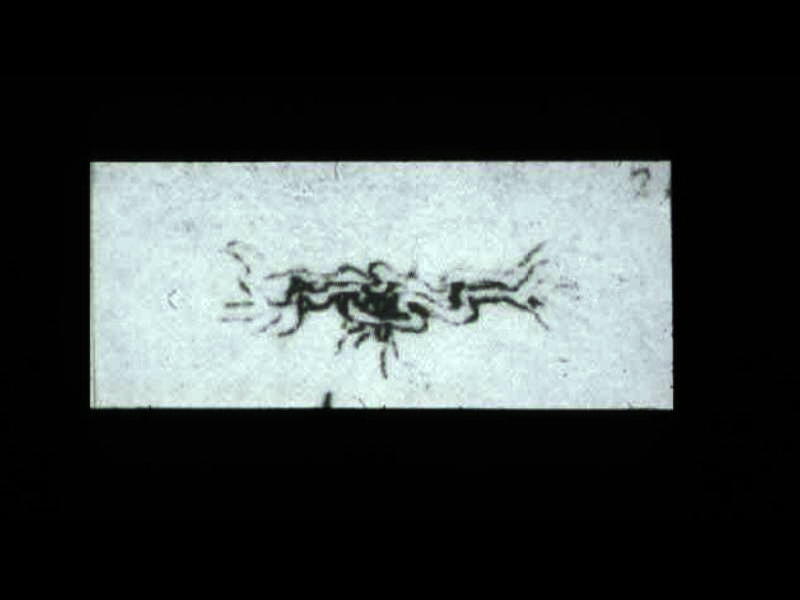Atherosclerosis – Historical Aspects – da Vinci
Copyright 2008

Serpiginous Splenic Artery – Da Vinci |
| This is a drawing of the “meseraic vessels” – presumably the celiac axis. Da Vinci was able to interview and perform an autopsy on a centenarian. He describes the dessicated and tortuos state of the vessels of this patient accurately depicting the atherosclerotic process. He describes the narrowed lumen and the consequences of poor blood flow.The translation of da Vinci’s text accompanying this one inch image is remarkably insightful and pioneering. (see atherosclerosis hisrorical da Vinci) 13045b |
“da Vinci had the unique experience of being able to know and perform an autopsy on an centenarian and described his findings of the aorta and splenic artery – characteristic of atherosclerosis. He observed the tortuosisy of the vessels, the calcification, the aneurysmal nature, the hardening and the lumenal narrowing of the atherosclerotic process. The following is the direct translation of daVinci’s writing. “The artery and vein which in the aged, extend between the spleen and the liver, acquire so thick a covering that it contracts the passage of the blood which comes from the meseraic (mesenteric portal) veins. By means of these veins the blood through the liver to the heartand the two major veins (cava) and consequently through the entire body. These veins apart from the thickening grow in length and twist like a snake, ….. …I have found there stones in the vessels which pass beneath the clavicles of the chest. These were as large as chestnuts of the color and shape of truffles or of dross or clinkers of iron. These stones were extremely hard, like these clinkers, and had formed sacs attached to the said vessels, in the manner of goiters. …And this old man, a few hours before his death, told me that he had passed one hundred years, and that he was concious of no failure of body, except feebleness. And thus sitting upon a bed in the hospital of Santa Maria Nuova Florence, without any untoward movement or sign, he passed from this life. And I made an anatomy to see the cause of death to see the cause of death so sweet, which I found to proceed from debility through lack of blood and deficiency of the artery (aorta) which nourishes the heart and other lower members. I found this artery very dessicated, shrunken and withered. This anatomy I described very carefully, and with great ease owing to the absence of fat and humor which rather hinder recognition of the parts. The other anatomy was that of a child of 2 yeqrs in which I found everything to be oppposite to that old man. The aged who enjoy good health die through lack of nourishment. This happens because the lumen of the meseraic (mesenteric portal) veins is constantly constricted by the thickening of the coverings of these vessels; which progress as far as the capillary vessels (vene chapillari) which are the first to close up entirely. As a consequence of this, the old dread the cold more than the young and those who are extremely old have a skin the color of wood or of dry chestnut because the skin is almost completely deprived of nourishment. The tunics of the vessels behave in man as in oranges, in which the peel thickens and the pulp diminishes the older they become. And if you say that it is the thickened blood which does not flowthrough the vessels, this is not true, for the blood does not thicken in the vessels because it is continually dies and is renewed.”
